How to paint the perfect scream
Top comic book artist Frazer Irving shares his top tips on capturing a truly terrified screeching face.

This is pretty subjective, as all artists have their own ways of depicting screams – all the way from Edvard Munch to Jack Kirby. The types of scream can vary a great deal as well and, as an artist, you need to know the differences between a scream of fear as opposed to a scream of anger or perhaps of pain.
Get a free poster with ImagineFX's pin-up issue
It's not uncommon for a lazy artist to use the wrong expression for an illustration and cause much confusion in the reader, especially in comics. What I'll do here is take you through the process of how I constructed an angry scream for a comic which was all about the scream and the power behind it.
To do this I employed standard drawing techniques next to graphic elements, in much the same way that Munch used swirls to enhance his Scream painting. Remember though that even the most detailed-looking image is really still composed of the most basic elements, so the trick is to identify which aspects of the face convey the idea most effectively.
01. Back to basics
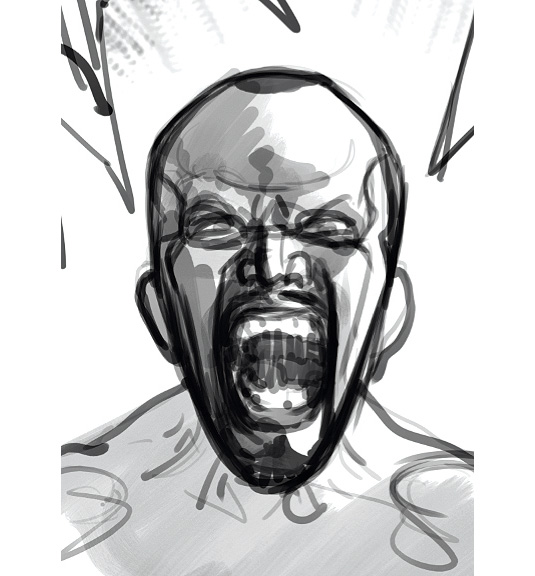
I started out with a rather basic sketch. This drawing is loose and rough in order to effectively capture and reflect the raw energy that's needed to drive the rest of the art. I always find that the initial stage of a drawing – whatever the tone, style or subject matter – provides the fuel for the final image, and so you mustn't hold back at all at this point if you want to capture that scream.
02. Add layers
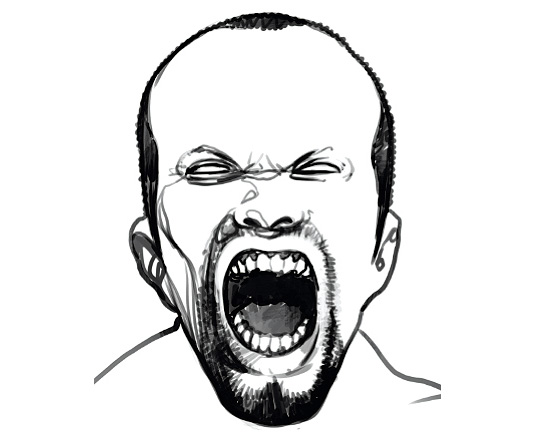
As per my normal method, I've traced the sketch onto a new layer. These lines refine the basic shape and the main features, framing the mouth with a beard and making sure that it reads as simply as possible. A lot of the raw energy from the original sketch is lost at this stage because of the simplicity of the black line, but this will all return as we progress to the final piece.
03. Shadow and Detail
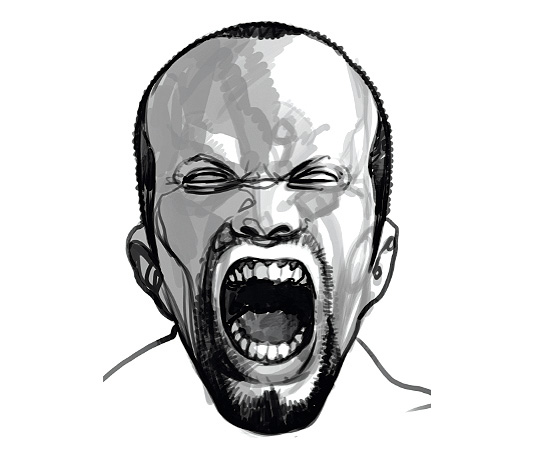
The next stage in the process is to block in some shadows on the subject's face. Extreme, dramatic lighting can be an incredibly valuable tool when you're trying to create a particular mood, and is especially useful when defining dramatic lines on the face. Here, I've chosen to use a side lighting in order to imply the conflict of emotion within the character.
Daily design news, reviews, how-tos and more, as picked by the editors.
04. Definition
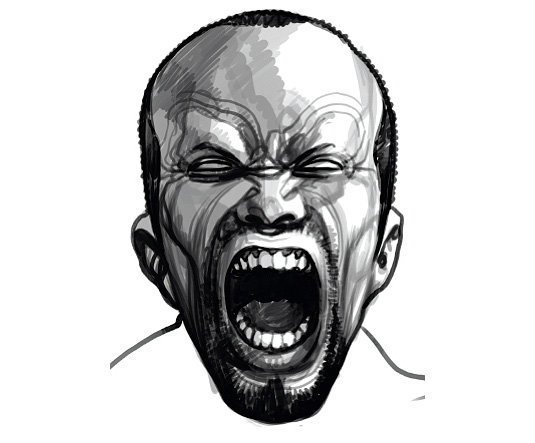
Wrinkles stemming out from the eyes are very important, and here I've exaggerated the lines on the forehead a little in order to enhance the anguish, as well as darkening the bridge of the nose to show the tension. These features capture the basics of the scream and, after this, all you need is the right colour and a background to set it off perfectly.
Artist's secret: Flip check tip
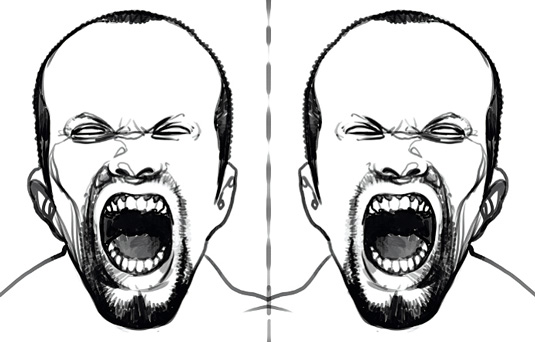
Every artist leans to one side. Use the Edit>Transform>Flip Horizontal to flip your drawing and check that the lean isn't too extreme. A little's fine but you can spot major errors this way.
Words: Frazer Irving
Top comic artist Frazer spends lots of time drawing horrid-looking things on his Wacom Cintiq. He has worked for 2000 AD and DC Comics. This article originally appeared in ImagineFX issue 42.
Like this? Read these!
- Top tips for painting vampire skin
- How to use symbolism to give your art bite!
- Free Photoshop brushes every creative must have

The Creative Bloq team is made up of a group of art and design enthusiasts, and has changed and evolved since Creative Bloq began back in 2012. The current website team consists of eight full-time members of staff: Editor Georgia Coggan, Deputy Editor Rosie Hilder, Ecommerce Editor Beren Neale, Senior News Editor Daniel Piper, Editor, Digital Art and 3D Ian Dean, Tech Reviews Editor Erlingur Einarsson, Ecommerce Writer Beth Nicholls and Staff Writer Natalie Fear, as well as a roster of freelancers from around the world. The ImagineFX magazine team also pitch in, ensuring that content from leading digital art publication ImagineFX is represented on Creative Bloq.
